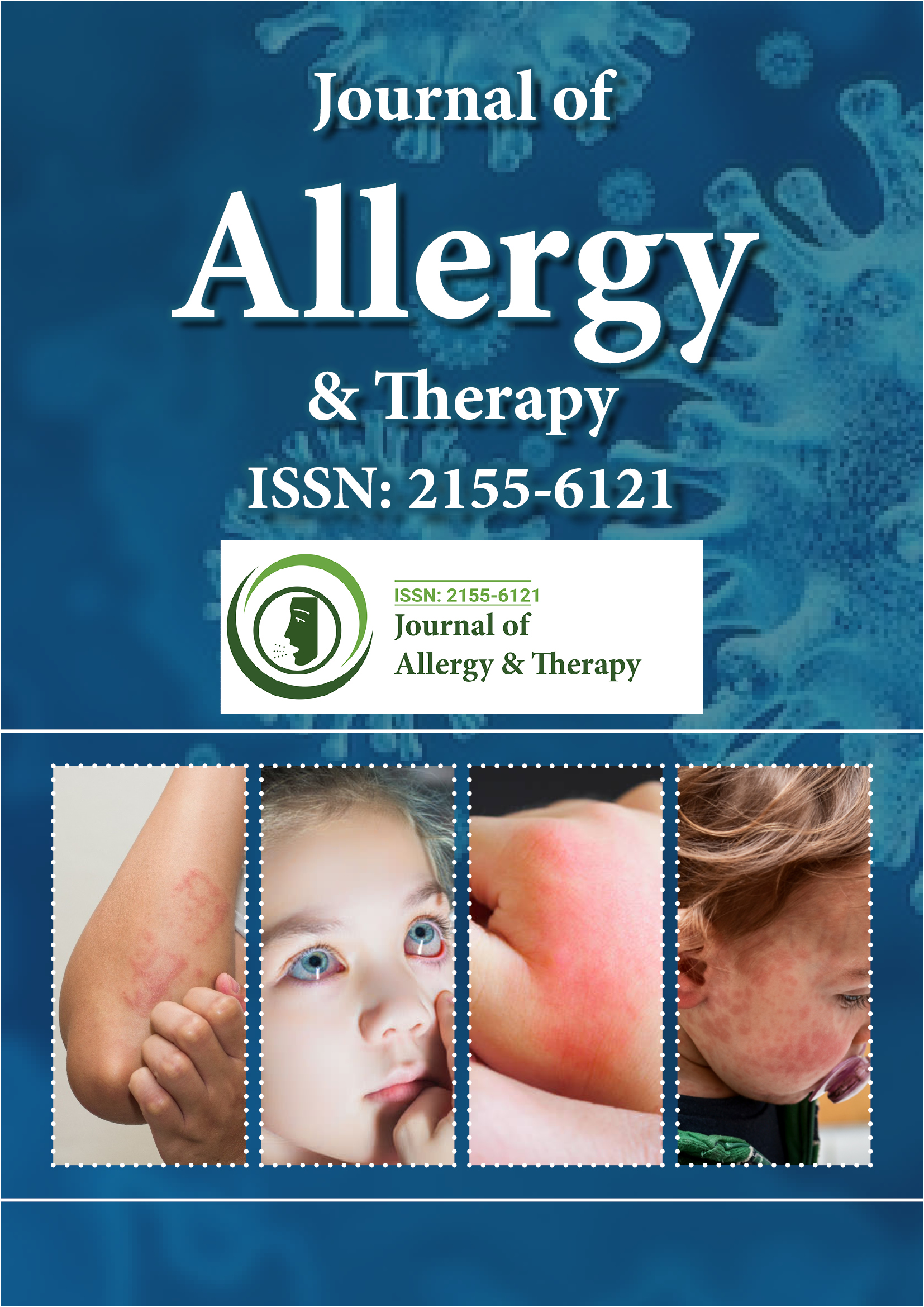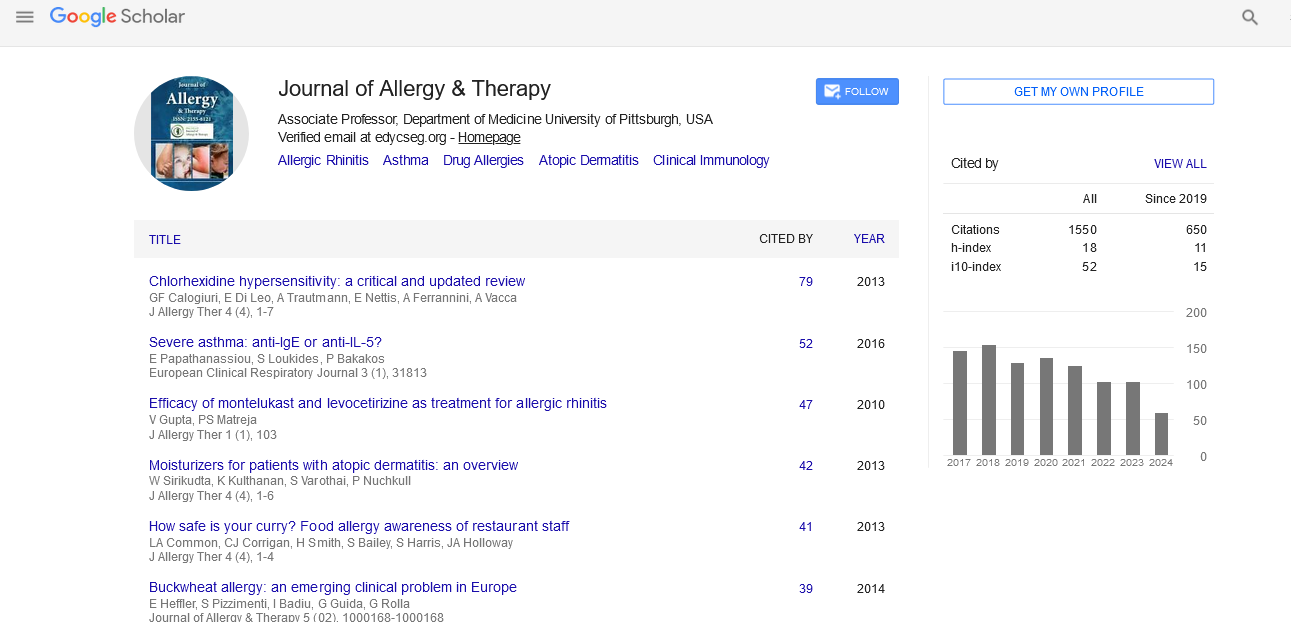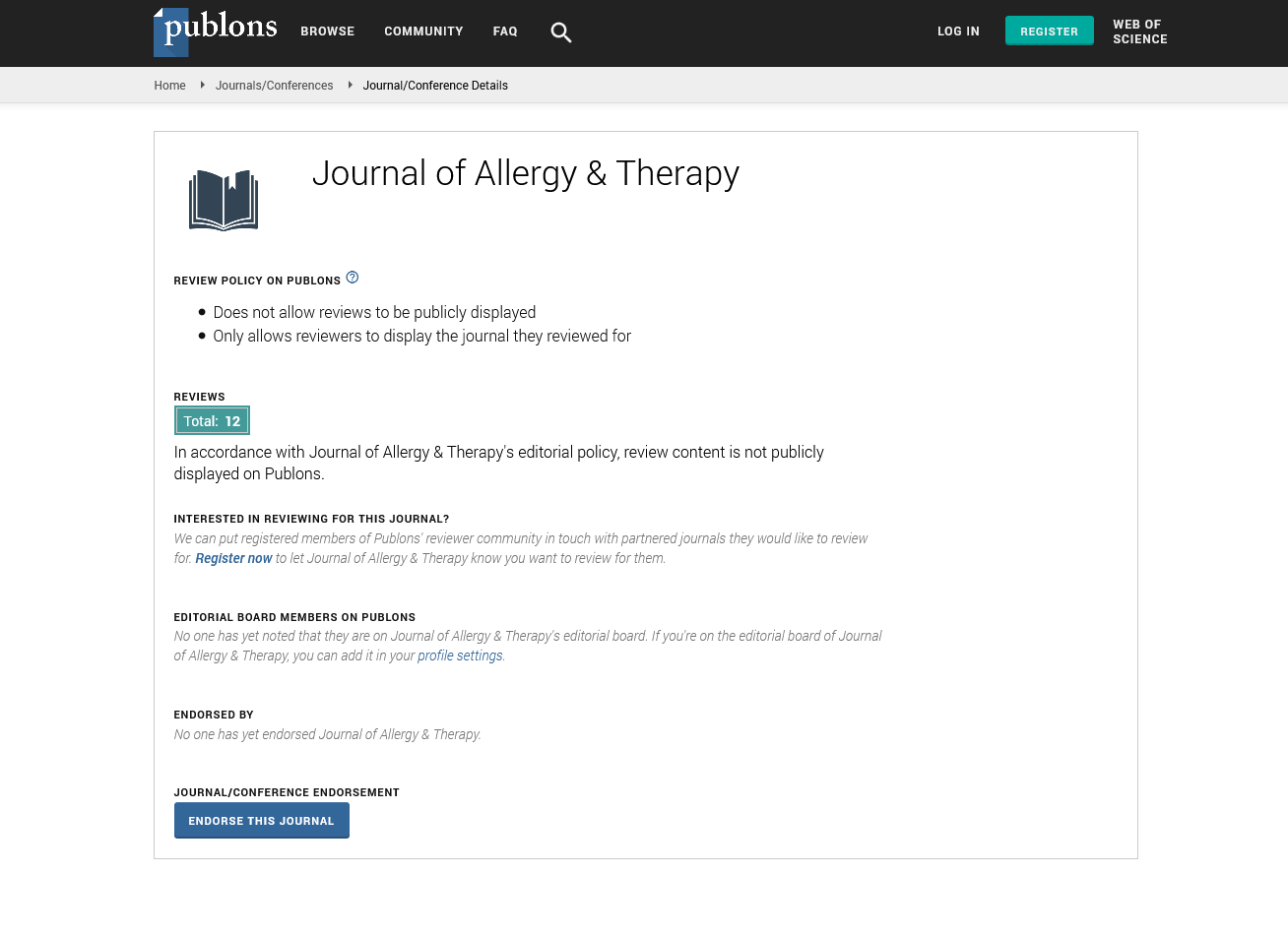Indexed In
- Academic Journals Database
- Open J Gate
- Genamics JournalSeek
- Academic Keys
- JournalTOCs
- China National Knowledge Infrastructure (CNKI)
- Ulrich's Periodicals Directory
- Electronic Journals Library
- RefSeek
- Hamdard University
- EBSCO A-Z
- OCLC- WorldCat
- SWB online catalog
- Virtual Library of Biology (vifabio)
- Publons
- Geneva Foundation for Medical Education and Research
- Euro Pub
- Google Scholar
Useful Links
Share This Page
Journal Flyer

Open Access Journals
- Agri and Aquaculture
- Biochemistry
- Bioinformatics & Systems Biology
- Business & Management
- Chemistry
- Clinical Sciences
- Engineering
- Food & Nutrition
- General Science
- Genetics & Molecular Biology
- Immunology & Microbiology
- Medical Sciences
- Neuroscience & Psychology
- Nursing & Health Care
- Pharmaceutical Sciences
Opinion Article - (2023) Volume 14, Issue 5
Exploring the Growth in Cases of Food Allergies Among Infants
Joanna Larson*Received: 29-Sep-2023, Manuscript No. JAT-23-23717 ; Editor assigned: 02-Oct-2023, Pre QC No. JAT-23-23717 (PQ); Reviewed: 16-Oct-2023, QC No. JAT-23-23717 ; Revised: 23-Oct-2023, Manuscript No. JAT-23-23717 (R); Published: 31-Oct-2023, DOI: 10.35248/2156-6121.23.14.362
Description
Food allergies have become a significant health concern, with a rising prevalence in infants and young children. Allergic reactions to food can range from mild hives to life-threatening anaphylaxis, and these reactions often begin in infancy. This article delves into the increasing prevalence of food allergies in infants, explores the potential reasons behind this trend, and discusses the difficulties and implications for affected families and the healthcare system.
Understanding food allergy
A food allergy is an adverse immune response to specific proteins found in certain foods. When an infant with a food allergy consumes the allergenic food, the immune system overreacts and releases chemicals that cause various symptoms. These symptoms can include skin rashes, digestive issues, respiratory problems, or even systemic anaphylaxis. It's important to differentiate between food allergies and food intolerances, as the former involve the immune system's response, while the latter typically relate to digestive issues and enzymes.
Prevalence of food allergies in infants
The prevalence of food allergies in infants has increased in recent years. While estimates vary, some studies suggest that as many as 1 in 13 children in the United States may have a food allergy. Infants and young children are particularly vulnerable, as food allergies often manifest early in life. Common food allergens in infants include milk, eggs, peanuts, tree nuts, soy, wheat, fish, and shellfish.
Genetics: Genetic predisposition plays a significant role in the development of food allergies. Children with a family history of allergies are more likely to develop them themselves.
Environmental factors: Changes in the environment, including diet and exposure to allergens, may influence the development of food allergies. Early introduction of solid foods, the quality ofinfant formula, and environmental pollutants have all been implicated.
Delayed introduction of allergenic foods: It was once believed that delaying the introduction of allergenic foods to infants would reduce the risk of allergies. However, current guidelines recommend introducing common allergenic foods as early as 4-6 months of age to reduce the risk of food allergies.
Challenges and implications
Health and safety: Food allergies can lead to potentially life- threatening reactions. Parents of infants with food allergies must be vigilant about food choices, label reading, and allergen avoidance to ensure their child's safety.
Nutritional challenges: Nutritionally, managing food allergies in infants can be difficult. Eliminating allergenic foods may result in dietary restrictions that affect an infant's overall nutrition and growth.
Healthcare system: The increasing prevalence of food allergies places a burden on the healthcare system, with more doctor visits, emergency room visits, and the need for specialized allergists to diagnose and manage allergies.
Prevention and management
Early introduction of allergenic foods: Recent guidelines from medical organizations recommend introducing common allergenic foods to infants as early as 4-6 months of age. This includes foods like peanuts, eggs, and milk, which can help reduce the risk of developing allergies.
Allergen labeling: Food manufacturers are required to label common allergens in their products, making it easier for parents to identify potentially allergenic foods.
Allergy testing: If there is a family history of allergies or an infant is showing symptoms of an allergic reaction, allergy testing should be considered to identify specific allergens.
Allergist consultation: Consulting with a pediatric allergist is essential for a comprehensive evaluation, diagnosis, and management plan for infants with food allergies.
Research and future directions
Early allergen introduction: Continued research will help refine recommendations for the early introduction of allergenic foods and identify the most effective strategies for reducing food allergies.
Immunotherapy: Research into immunotherapies for food allergies, such as oral immunotherapy or sublingual immunotherapy, aims to desensitize individuals to specific allergens.
Conclusion
The prevalence of food allergies in infants has steadily increased, leading to a growing public health concern. This trend has implications for affected families, healthcare professionals, educational institutions, and society as a whole. Early introduction of allergenic foods, breastfeeding, and proper allergen labeling are key strategies to reduce the risk of food allergies in infants. Continued research and education are vital to better understand the causes and mechanisms behind this trend and develop effective prevention and treatment strategies.
Citation: Larson J (2023) Exploring the Growth in Cases of Food Allergies Among Infants. J Allergy Ther. 14:362.
Copyright: © 2023 Larson J. This is an open-access article distributed under the terms of the Creative Commons Attribution License, which permits unrestricted use, distribution, and reproduction in any medium, provided the original author and source are credited.


